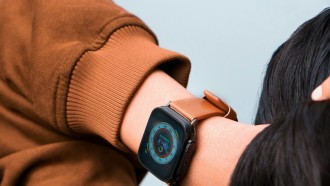The first "vagina-on-a-chip," named so because it recreates the vaginal microbiome using living cells and bacteria, has been created by researchers.
In a report by Scientific American, testing this tech on drugs used against bacterial vaginosis (BV) might be useful since this frequent microbial imbalance increases the risk of premature birth in pregnant women and renders millions of individuals more vulnerable to STDs.
A Genuine Model
The "totally different microbiomes" between people and laboratory animals make studying vaginal health challenging, says bioengineer Don Ingber of Harvard University's Wyss Institute for Biologically Inspired Engineering.
Their solution? An inch-long, rectangular polymer capsule is holding a living human vaginal tissue from a donor and a flow of estrogen-carrying substance to resemble vaginal mucus, as what he and his colleagues call "the chip," detailed in the journal Microbiome.
"Organs-on-a-chip" replicate real-body function, streamlining research into illnesses and medication testing.
In this case, the tissue performs essentially as would a genuine vagina. It adjusts gene expression in response to estrogen levels.
And, like a person, it may cultivate a microbiome that is either driven by good or bad bacteria.
For instance, Lactobacilli bacteria maintain women's vaginas "nice and acidic," says Ruth Mackay of Brunel University London.
As a Research Instrument
Ingber and his associates showed that Lactobacilli colonizing the chip's tissue and secreting lactic acid contributed to keeping the chip's pH at an optimally low value.
They found that Lactobacilli on chip tissue produce lactic acid to maintain a low pH. Adding Gardnerella causes the chip to show characteristic BV symptoms such as a rise in pH, cell damage, and inflammation.
Therefore, the vaginal microbiome's effect on health may be seen on the chip.
For the next phase, Ingber claims that his team has started studying unique microbiomes by transferring donor vaginal swabs' worth of germs to chips.
Read Also: Researchers Train Large Language Models to Identify How Virus Evolves
Experts' Notions
According to Scientific American's report, sexual health doctor Achyuta Nori of St. George's, University of London, feels the chip represents a major advancement. He claims it has the potential to revolutionize medical practice.
Nori says he is especially interested in seeing how commonly used antibiotics for BV could respond against the various bacterial strains.
The current state of women's health research is marked by "poor quality of evidence." Thus, using cutting-edge studies and equipment is a chance to improve women's health these days.
Organ-on-a-chip simulates organs in isolation from the body, say critics. It has its limits, Mackay also admits.
Since BV has been linked to problems during birth, many scientists study the changes in the vaginal microbiome during pregnancy.
Mackay is skeptical that the chip can properly simulate pregnancy since, despite its tissue's response to estrogen, it lacks feedback loops from other organs.
With this, Ingber believes researchers may not need all the extra intricacy to simulate pregnancy. His team is already linking the vagina chip to a cervix chip to represent the reproductive system better.
Mackay is excited about the technology, even though certain applications need further work. Beyond being a technical development, she argues, Ingber's curiosity may help legitimize vaginal research.
Read Also: Researchers Create an AI Model that Predicts Positive, Negative Results of COVID-19 Tests






